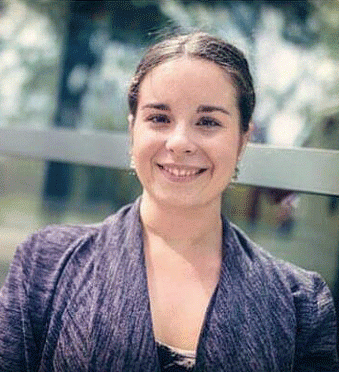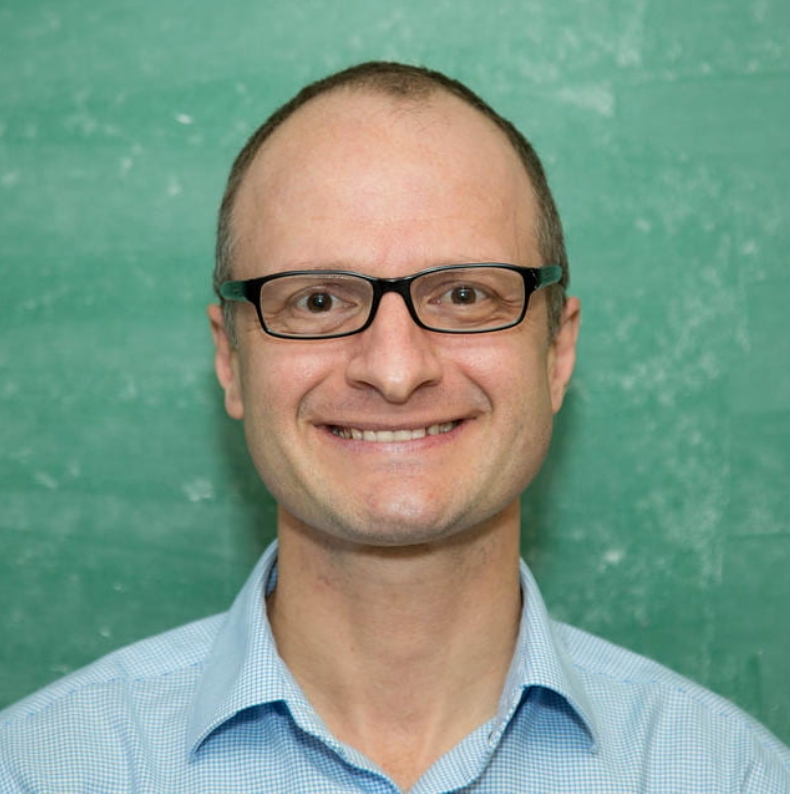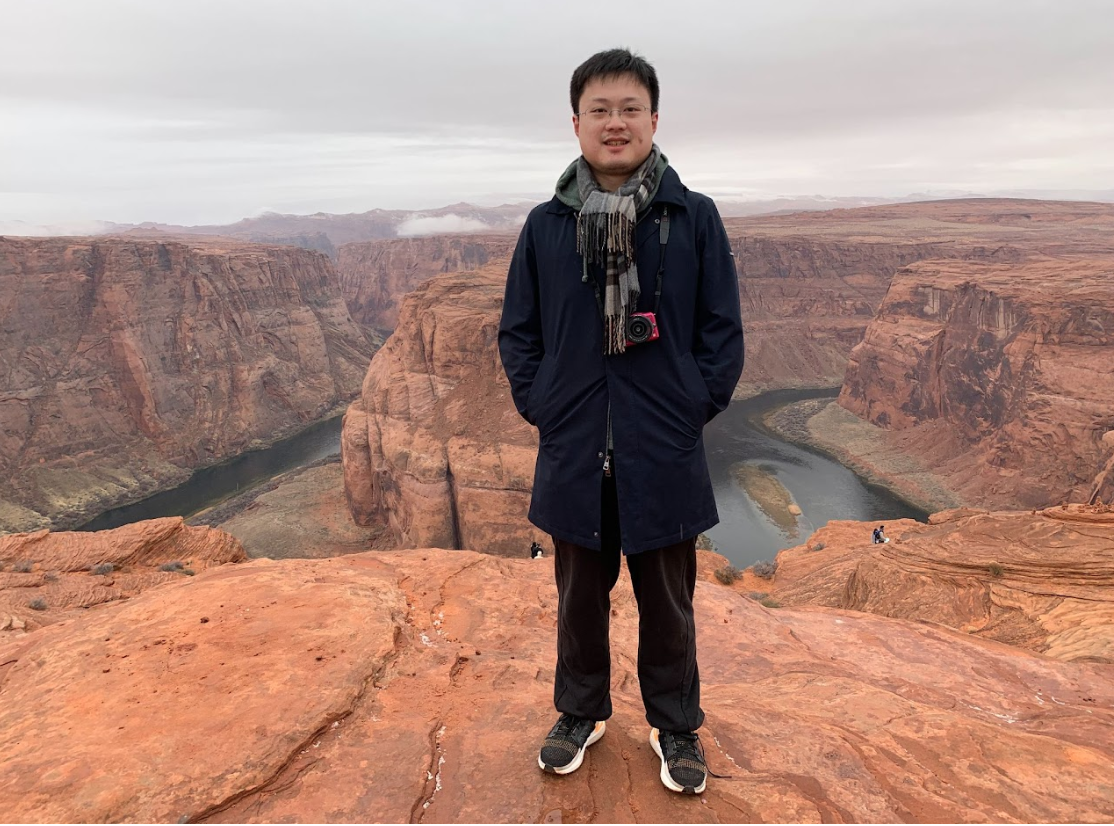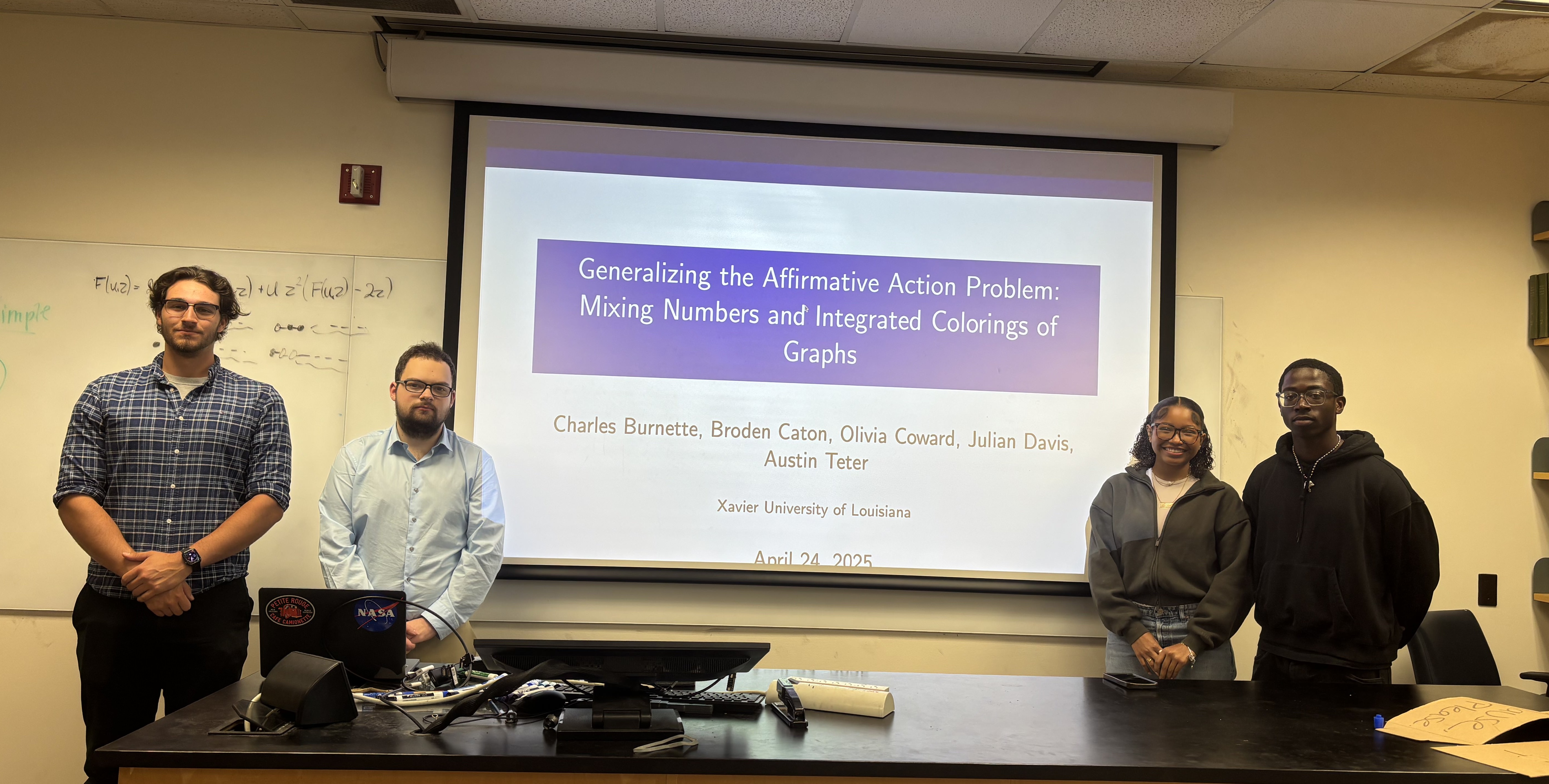Spring 2025 seminar schedule

Tue Jan 28, 12:15pm · NCF 574 — Cauchy's Integral Formula as an Act of Combinatorics II: Electric Boogaloo
In the field of combinatorics, a generating function is a formal power series whose coefficients correspond with a sequence of integers. When treated as functions of a complex variable, however, generating functions bridge the gap between enumerative combinatorics and complex analysis. By using Cauchy's integral formula to extract the coefficients of a generating function, problems which we traditionally identify as "combinatorial" can transform into "analytic" ones.
In part 2 of this series, we will explore how Egorychev's method of using the Residue Theorem to evaluate combinatorial sums can suggest bijective proofs of the resulting identities, which are often difficult to conjure up without additional context. We will study several examples, some old and some new, involving binomial coefficients, the Stirling numbers (of both kinds), the Catalan numbers, and various other sequences of note.
Slides available on the original page.

Tue Feb 4, 12:15pm · NCF 574 — Total Positivity and Cluster Theory
A square matrix is said to be totally positive, TP, or totally non-negative, TNN, if all of its minors are positive, respectively, non-negative. In this talk, we will discuss when a matrix is TP/TNN or how to construct a TP/TNN matrix using combinatorial objects. Additionally, we will see how this problem is studied through Lie theory and cluster algebra, if time permits.

Tue Feb 25, 12:15pm · NCF 574 — Metric entropy for bounded variation functions
Inspired by a question posed by Lax in 2002, the study of metric entropy for nonlinear PDE has received increasing attention in the recent years. The notion of entropy has different interpretations and applications across several branches of science. However, in the context of PDE, it refers to quantitative compactness estimates that are established for different function classes which characterize the solutions to certain nonlinear PDE.
This talk, focusing on real-valued functions, demonstrates methods to obtain bounds on the metric entropy for a class of nondecreasing functions and a class of bounded variation functions. Such estimates are used to measure solution sets of several nonlinear PDE like scalar conservation laws and Hamilton–Jacobi equations, and could provide an insight into the order of resolution or complexity of a numerical scheme required to solve these equations.

Tue Mar 18, 12:15pm · NCF 574 — Recent advances in nonlinear PDEs
In this talk, we will discuss some recent advances in studying nonlinear PDEs. We will discuss some ideas and results related to the Navier Stokes and Euler equations for incompressible fluid flow in three dimensions. We will then consider Burgers equation as a one dimensional model for understanding some of the phenomenon observed in these higher dimensional problems.
Finally, we will consider some perturbations of Burgers equation, such as the KdV and CH equations, which may help us understand, albeit partially, some of the phenomena observed or conjectured for the higher dimensional problems.

Tue Mar 25, 12:15pm · NCF 574 — From the first soliton until today.
The study of solitons and the nonlinear partial differential equations that govern them is an exciting and extremely active field of research. In this talk, we will explore the unique features of solitons, tracing their journey from the first observed soliton to the development of the mathematical framework that describes them.
Key to this exploration will be the concepts of integrability, inverse scattering theory, and Riemann-Hilbert analysis - core pillars of my research - that are essential for understanding and analyzing these intriguing waves. Through this discussion, we will uncover how the foundational tools that drive the study of nonlinear wave phenomena have evolved over time.
Bio and slides available on the original page.

Fri Mar 28, 11:00am · NCF 574 — Geometry of Cluster Algebras
Cluster Algebras were invented by Fomin and Zelevinsky 25 years ago. For a short time, they turned into an indispensable tool for studies in Algebra, Geometry, Combinatorics and Mathematical Physics. The talk will be a gentle introduction to the area based on examples and without assuming any background except Linear Algebra. In the last bit of the talk we will discuss the underlying geometry of Cluster Algebra through the lenses of concrete examples.

Tue Apr 1, 12:15pm · NCF 574 — Infinitesimal Homeostasis in Mass‑Action Systems
Homeostasis occurs in a biological system when a chosen output variable remains approximately constant despite changes in an input variable. In this work we specifically focus on biological systems which may be represented as chemical reaction networks and consider their infinitesimal homeostasis, where the derivative of the input-output function is zero. The specific challenge of chemical reaction networks is that they often obey various conservation laws complicating the standard input-output analysis.
We derive several results that allow to verify the existence of infinitesimal homeostasis points both in the absence of conservation and under conservation laws where conserved quantities serve as input parameters. In particular, we introduce the notion of infinitesimal concentration robustness, where the output variable remains nearly constant despite fluctuations in the conserved quantities. We provide several examples of chemical networks which illustrate our results both in deterministic and stochastic settings.

Tue Apr 15, 12:15pm · NCF 574 — Discovering Ramanujan's Notebooks
Ramanujan's five Notebooks and the additional five Lost Notebooks contain nearly four thousand entries, some of which are very challenging, even to professional mathematicians. Some entries, however, are accessible to beginners, and deep enough to motivate further explorations. The aim of this talk is to exhibit some of these entries and, for each of them, to produce some possible directions of research. On the way, the technique of Integration by Differentiation, that was introduced by A. Kempf 10 years ago, will be introduced. This is joint work with Zachary Bradshaw (Naval Surface Warfare Center, Panama City) and Russell George (Tulane University).
Slides, pictures, and bibliography linked on the original page.

Thu Apr 24, 12:15pm · NCF 574 — Generalizing the Affirmative Action Problem: Mixing Numbers and Integrated Colorings of Graphs
Consider a graph whose vertices are colored in one of two colors: black or white. A white node is called integrated if it has at least as many black as white neighbors, and similarly for a black node. A coloring of a graph is said to be integrated if each of the nodes is integrated. A classic exercise in graph theory, known as the Affirmative Action Problem, is to prove that every simple graph admits an integrated coloring.
The solution is very simple and can be neatly summarized with the one-liner: "maximize the number of balanced edges," that is the edges that connect neighbors of different colors. However, not all integrated colorings have the maximal number of balanced edges.
In this talk, we will enumerate the possible integrated colorings over complete graphs, complete bipartite graphs, paths, and cycles. We will also provide the distribution of the mixing numbers (the number of balanced edges) across all integrated colorings over these classes of graphs. In particular, we will characterize the colorings for both the maximal and minimal mixing numbers.